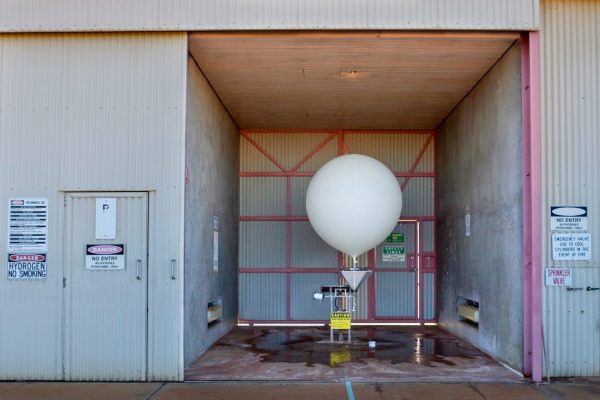

How Do Hot Air Balloons and Gas Balloons Work?
A bucket list item for many, hot air balloon rides are a pinnacle of romance and adventure. The pilots of gas balloons, also, have historically pioneered the skies just as explorers took to the seas to discover faraway lands. Both are used today for recreation and scientific discovery – but how do hot air and gas balloons work, and what is the difference between the two? Fire, propane, and lifting gases orchestrate these winsome activities and applications.
Hot Air Balloons and Propane Cylinders
Hot air balloons differ from gas balloons in one major feature: their ballooning fabric is open, while gas balloons are sealed. Though structurally and functionally similar, hot air balloons utilize propane gas to heat the air that fills and lifts them, rather than being filled with pure gas.
The air must heat in some way, which will then rise to inflate the envelope – or the large colorful fabric of the balloon. The burner is fueled by propane cylinders, which can be maneuvered to increase or decrease temperatures. The temperature is increased when ready for takeoff and decreased when ready for landing. Today, hot air balloons carry small 20 to 40-gallon liquid propane tanks that allow for an hour to an hour-and-a-half-long flights, burning 30 gallons per hour.
Hydrogen and helium are no longer used for hot air balloon rides but are used in gas balloons – which no longer carry passengers, but fly solo. Hydrogen is highly flammable and is no longer preferential, as can be confirmed by the Hindenburg Disaster of 1937. Thus, helium has been the leading lifting gas assistant in aerospace exploration.

Gas Balloons: Hydrogen and Helium
Gas balloons differ from hot air balloons due to the fact they are enclosed with a lifting gas, and that they remain a dull gray, rather than an aesthetic color splash. This recreational and scientific form of aviation has been around since 1783. Gas balloons pilots – called aeronauts – traveled far and wide prior to the invention of airplanes. The Smithsonian Magazine notes that in 1862, aeronauts James Glaisher and Henry Coxwell, travelled higher than Everest’s 29,029-foot peak, up to 37,000 feet into the atmosphere.
Although gas balloons are not specifically used for this function in the 21st century, they are still used in the realm of research, flying without pilots or passengers. Today, weather balloons are miniature gas balloons that utilize a lifting gas to soar, providing data for upcoming forecasts.
NASA uses massive gas balloons for space and earth exploration by way of super-pressure and zero-pressure balloons. These balloons, according to NASA, are large enough to fit 195 Goodyear blimps inside of them! Super-pressure balloons look like pumpkins and can fly 120,000 feet high for up to 100 days, while zero-pressure balloons operate from shorter ascents ranging anywhere between a couple of hours to 55 days. NASA balloons can help take measurements, collect data, and even explore new planets in the galaxy. The Balloon Program has hopes to expand to exploration in the atmospheres of Mars and Venus, with the help of lifting gases.
So, what are lifting gases, and how do they work? Both helium and hydrogen are considered lifting gases because they are lighter than air. In fact, they are so light, that when these gases are released into the atmosphere, they disappear into space. This is one of the reasons why helium capture is so important – as helium is a nonrenewable resource and its supply is limited on earth. It turns out that helium lifts more than just party balloons.

Hot Air Balloon Festivals in Colorado and Utah 2022
The Labor Day Lift Off in Colorado Springs, the Snowmass Balloon Festival in Aspen, the Sandy Balloon Festival in Salt Lake City, and several other festivals in the region backdropping mountain ranges and dreamy desert terrains are the perfect summer cap off.
Each year, 70 hot air balloons – give or take – depart from Memorial Park in Colorado Springs at the Labor Day Lift Off for a sunrise and a sunset spectacle. The nighttime rides showcase balloons glowing like lanterns across the backdrop of Pikes Peak. Less than a month prior, in Salt Lake City, on August 12th and 13th, hot air balloons will rise with the sun to introduce a day filled with all kinds of outdoor activities – a 5k, concerts, and a market of local goods.
You can be certain that gas distributors for hot air balloons are doing behind the scenes work to make these events a success as hot air balloon pilots prepare the propane for lift off.
Supplying Propane and Helium for Balloons in the Western United States
Whether you’re in need of liquid propane for hot air balloon rides and festivals, or helium for weather and space balloons, Rocky Mountain Air can provide the stock of cryogenic gases necessary for your in-flight applications. Our team of cryogenic experts are well-trained in analyzing gas needs on individual scales.
RMA is a resource that offers flawless dependability to partners in the Rocky Mountain region and supplies propane and butane for businesses that cater to these everyday uses. Contact your local branch in Colorado, Idaho, Nebraska, Utah, or Wyoming today to speak to a representative. We look forward to serving you!



